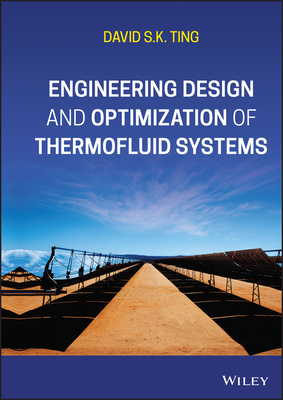Introduction to Thermal Systems Engineerin (Hardcover)
暫譯: 熱系統工程導論 (精裝版)
Michael J. Moran , Howard N. Shapiro , Bruce R. Munson , David P. DeWitt
- 出版商: Wiley
- 出版日期: 2002-09-17
- 售價: $1,720
- 貴賓價: 9.8 折 $1,686
- 語言: 英文
- 頁數: 576
- ISBN: 0471204900
- ISBN-13: 9780471204909
-
相關分類:
熱力學 Thermodynamics
下單後立即進貨 (約5~7天)
相關主題
商品描述
●Unifying Theme: Thermal Systems Engineering. The presentation opens in Chapter 1 with an engaging, case-oriented introduction to thermal systems engineering. Chapter 1 also describes thermal systems engineering generally and shows the roles of thermodynamics, fluid mechanics, and heat transfer for analyzing thermal systems as well as their relationship to one another.
●Manageable size and flexible approach . The authors have identified the core subject matter in each area and have presented it in a 600-page print format that can be covered in one semester. An accompanying CD, containing the full printed text plus 200 pages of additional content, makes the text/CD package appropriate for two semesters.
●Content that works in the classroom. Adapted from the market-leading texts in thermo, fluids, and heat transfer that have educated over 600,000 engineering students combined!
●Consistent problem-solving procedures. All worked examples throughout the text employ a consistent 5-step problem solving procedure for solving thermal systems problems.
●Useful student study tools. Each chapter begins with a clear statement of objective and concludes with a chapter summary and study guide. Lists of key terms are found in the margins. A generous collection of end-of-chapter problems is included, classified by key topic.
●E-text with additional resources. Each copy of the printed text comes with a CD that includes the 600-page print text and 200 pages of additional content, hyperlinked to show connections between topics. The CD also includes additional worked examples, answers to selected end of chapter problems, and short video clips of fluid flow phenomenon. For retrieval of property data, and to model and solve more complex problems, Interactive Thermodynamics and Interactive Heat Transfer programs also are included on the CD.
商品描述(中文翻譯)
● 統一主題:熱系統工程。 本書在第一章以引人入勝的案例導向介紹熱系統工程。第一章還一般性地描述了熱系統工程,並展示了熱力學、流體力學和熱傳遞在分析熱系統中的角色及其相互關係。
● 可管理的大小和靈活的方法。 作者已確定每個領域的核心主題,並以600頁的印刷格式呈現,適合在一個學期內完成。隨附的CD包含完整的印刷文本以及200頁的附加內容,使得文本/CD套件適合兩個學期使用。
● 適合課堂使用的內容。 本書改編自市場領先的熱力學、流體和熱傳遞教材,這些教材已經教育了超過600,000名工程學生!
● 一致的問題解決程序。 本書中所有的範例都採用一致的五步驟問題解決程序來解決熱系統問題。
● 有用的學生學習工具。 每章開始時都有明確的目標陳述,並以章節摘要和學習指南結束。關鍵術語的列表位於邊緣。每章結尾還包含大量的問題,按關鍵主題分類。
● 附有額外資源的電子文本。 每本印刷文本都附有一張CD,該CD包括600頁的印刷文本和200頁的附加內容,並提供超連結以顯示主題之間的聯繫。CD還包括額外的範例、選定章節問題的答案,以及流體流動現象的短視頻片段。為了檢索性質數據,並建模和解決更複雜的問題,互動熱力學和互動熱傳遞程序也包含在CD中。
目錄大綱
1.What is Thermal Systems Engineering?
2.Getting Started in Thermodynamics: Introductory Concepts & Definitions
3.Using Energy and the First Law of Thermodynamics
4.Evaluating Properties
5.Control Volume Analysis Using Energy
6.The Second Law of Thermodynamics
7.Using Entropy
8.Vapor Power and Refrigeration Systems
9.Gas Power Systems
10.Psychrometric Applications (CD only)
11.Getting Started in Fluid Mechanics: Fluid Statics
12.The Momentum and Mechanical Energy Equations
13.Similitudes, Dimensional Analysis and Modeling
14.Internal and External Flow
15.Getting Started in Heat Transfer: Modes, Rate Equations and Energy Balances
16.Heat Transfer by Conduction
17.Heat Transfer by Convection
18.Heat Transfer by Radiation
目錄大綱(中文翻譯)
1.What is Thermal Systems Engineering?
2.Getting Started in Thermodynamics: Introductory Concepts & Definitions
3.Using Energy and the First Law of Thermodynamics
4.Evaluating Properties
5.Control Volume Analysis Using Energy
6.The Second Law of Thermodynamics
7.Using Entropy
8.Vapor Power and Refrigeration Systems
9.Gas Power Systems
10.Psychrometric Applications (CD only)
11.Getting Started in Fluid Mechanics: Fluid Statics
12.The Momentum and Mechanical Energy Equations
13.Similitudes, Dimensional Analysis and Modeling
14.Internal and External Flow
15.Getting Started in Heat Transfer: Modes, Rate Equations and Energy Balances
16.Heat Transfer by Conduction
17.Heat Transfer by Convection
18.Heat Transfer by Radiation































